BUILDING A SET OF CAPPED BUST HALF DIMES (1829-1837)
Of all the early U.S. coinage issues, a set of Capped Bust half dimes is the easiest to complete. There are no rarities and the series is short making the task of assembling a collection both affordable and enjoyable in a reasonable amount of time. For the specialist, there are much deeper layers to study in this series.
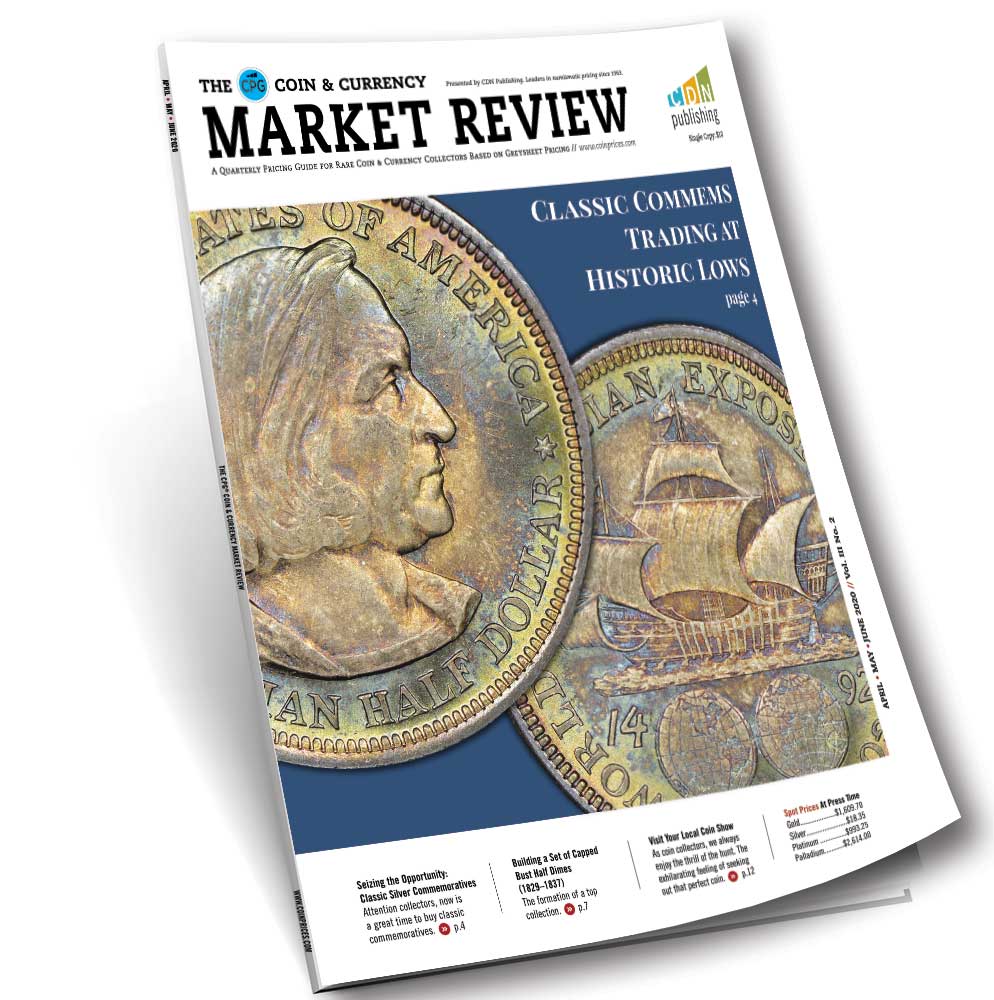
This article first appeared in the CPG Coin & Currency Market Review, April-May-June 2020
Pre-1840 U.S. coins are often referred to as “early” issues. Of all series
of early U.S. silver or gold coins, a set of Capped Bust half dimes is the
easiest to complete. There are no rarities. Representatives of all dates
and major varieties are modestly priced.
There are no half dimes dating from 1806 to 1828 because U.S. citizens were accustomed to Half-Real (6.25 cent) coins of the Spanish Empire and of newly independent societies that were formerly part of the Spanish Empire. Half-Real coins circulated in large numbers in the U.S. along with One Real (12.5 cent) and Two Reales (25 cent) coins.
By the 1830s, the decimal system was widely accepted and the use of Spanish coins was declining in the U.S. People then demanded half dimes.
Half dimes are much different from five cent nickels, which were not introduced until 1866. There is no silver in five cent nickels and there is no nickel in half dimes. Half dimes were specified to weigh half as much as corresponding dimes, but are very thin. The diameter of a half dime is more than half the diameter of a corresponding dime.
All Capped Bust half dimes were struck at the Philadelphia Mint, and date from 1829 to 1837. Most collectors of this series assemble sets ‘by date.’
Though historically important and aesthetically neat, Capped Bust half dimes are not expensive. For most dates in the series, the January 2020 CPG ® (collector-retail) guide values are $61 in Good-4 grade, $81 in Very Good-8 grade, $94 in Fine-12 grade, $122 in Very Fine-20, $143 in Very Fine-30, $176 in Extra Fine-40, $208 in Extra Fine-45, $260 in About Uncirculated-50, $299 in About Uncirculated-55, $370 in About Uncirculated-58 grade, $422 in Mint State-60, $598 in Mint State-62, $942 in Mint State-63, $1,250 in Mint State-64 grade, and $2,500 in Mint State-65.
Recently, the firm called GreatCollections publicly sold several circulated pieces: an NGC graded AU58 1829 for $316.25 on Feb. 9, a PCGS graded VF25 1830 for $104.62 on Feb. 23, a PCGS graded AU55 1832 for $254.25 on Feb. 9, a PCGS graded AU55 1833 for $405.66 on Feb. 9, an NGC graded AU58 1834 for $232.74 on Dec. 29, a PCGS graded XF40 1835 ‘Large 5 C.’ for $129.39 on Feb. 9, a PCGS graded AU55 1836 ‘Small 5 C.’ for $187.65, and a PCGS graded XF45 1837 ‘Large 5 C.’ for $169.88 on Sept. 29, 2019.
It is important to not take certified grades too seriously. Even if two coins that were struck from the same pair of dies receive the same numerical grade from the same service, there could very well be significant differences between the two coins. Moreover, the same coin may be assigned different grades from the same service at different times. There are many variables and opinions relating to grading.
If a non-expert is to buy coins by mail or over the Internet, he or she should spend amounts that the respective collector regards as small amounts of money. Before spending a large amount on any one coin, it is a good idea to consult a pertinent expert. For coins that cost less than $1,000 each, however, it may not be practical to consult experts or to develop a solid long-term relationship with each seller. Similarly, for many Capped Bust half dimes that are valued below $150 each, dealers will not usually send them to grading services as the grading fees and shipping costs amount to substantial percentages of the values of the respective coins.
Collectors should carefully examine many coins, pose questions to competent dealers and other knowledgeable numismatists, and be prepared to incur some risks. It is not a good idea for a beginner to spend his annual collecting budget in four months. It is best to proceed slowly, learn while collecting and have fun.
Collecting Capped Bust half dimes ‘by date’ is easy and satisfying. Many collectors choose to add major varieties to enhance their sets, especially since these are not very expensive.
For Capped Bust half dimes dating from 1835 to 1837, there are ‘Large 5 C.’ and ‘Small 5 C.’ varieties. The denomination, ‘5 C.,’ is part of the reverse (back) design. As it was then understood that half dimes are predominantly silver, there was not need to include the word ‘silver’ as part of the design. To someone who has spent at least a little time carefully studying the letters and numerals, ‘Large 5 C.’ and ‘Small 5 C.’ varieties are readily apparent without magnification.
In June 2018, the Goldbergs auctioned a PCGS graded AU50 1836 ‘Large 5 C.’ half dime for $132. In August 2019, Heritage sold a PCGS graded AU50 1836 ‘Small 5 C.’ half dime for $192. Around two months earlier, though, in the middle of April 2019, Heritage sold a PCGS graded AU53 1836 ‘Small 5 C.’ half dime, for $194.40, just $2.40 more than the cited PCGS graded AU50 coin.
The 1837 ‘Small 5 C.’ Capped Bust half dime tends to bring a notable premium. In early February 2020, Heritage sold a PCGS graded VF-35 coin for $324, almost exactly the CPG®price estimate of $325. In March 2018, Heritage sold a PCGS graded AU50 1837 ‘Small 5 C.’ Capped Bust half dime for $660. In September 2019, Heritage sold an NGC graded MS62 1837 ‘Small 5 C’ half dime for $1800.
The 1834 and 1836 “3 over inverted 3” varieties are noteworthy and appealing, though require study. It best to complete a set ‘by date’ before considering them. The CPG® guide indicates that representatives of these varieties are not very costly. The 1836 “3 over inverted 3” is more apparent and interesting than the 1834 “3 over inverted 3.”
There are not obstacles to completing a set of Capped Bust half dimes ‘by date.’ In the current market environment, half dimes that grade from VF30 to AU53 are the best values as they have much detail and cost fractions of the prices of relevant ‘mint state’ coins.
# # #
Copyright ©2020 Greg Reynolds
Insightful10@gmail.com

Download the Greysheet app for access to pricing, news, events and your subscriptions.
Subscribe Now.

Subscribe to CPG® Coin & Currency Market Review for the industry's most respected pricing and to read more articles just like this.
Source: Greg Reynolds


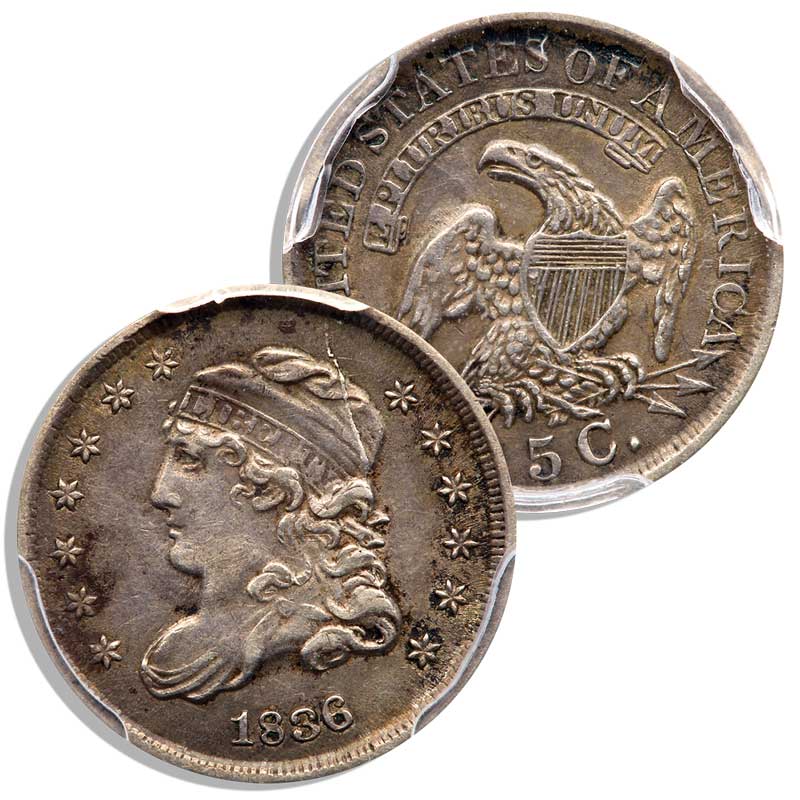






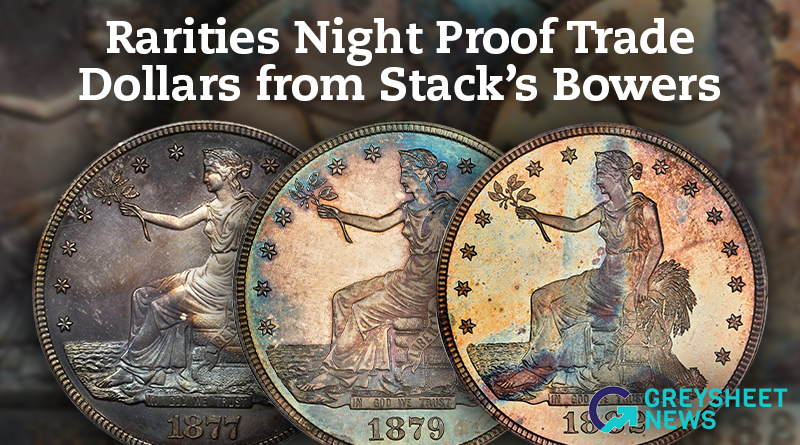
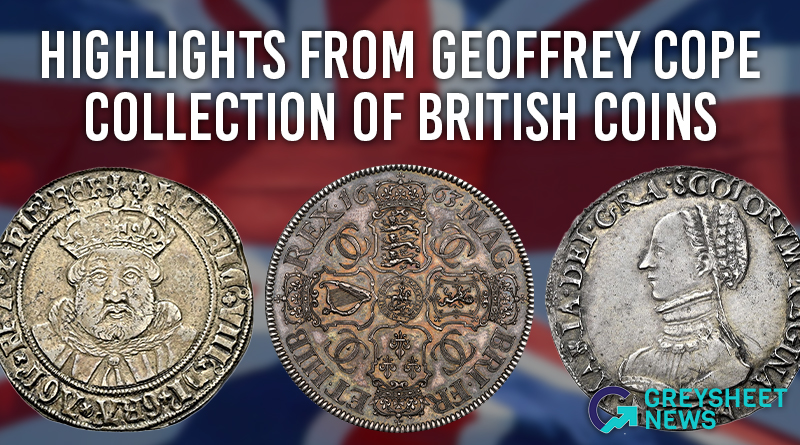
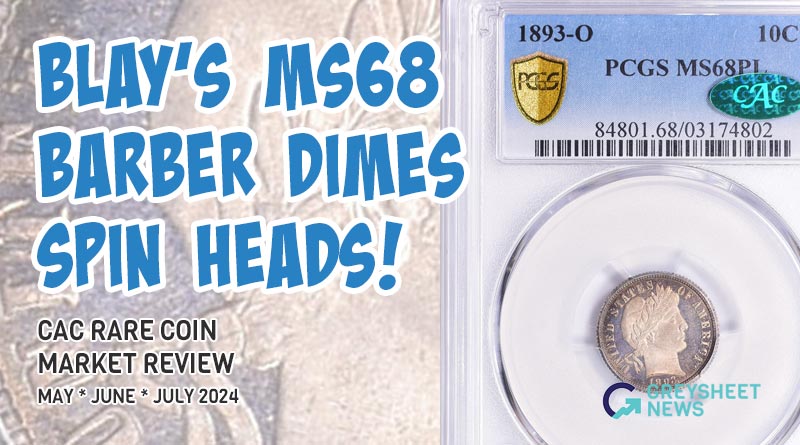
Please sign in or register to leave a comment.
Your identity will be restricted to first name/last initial, or a user ID you create.
Comment
Comments